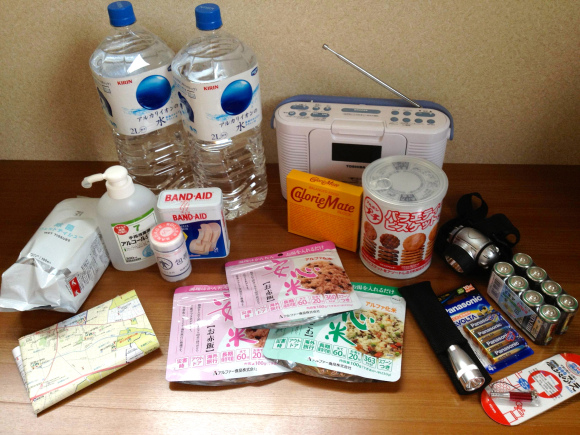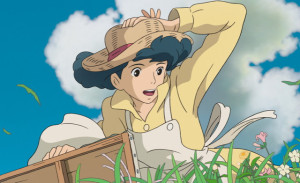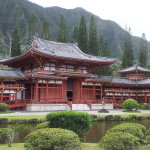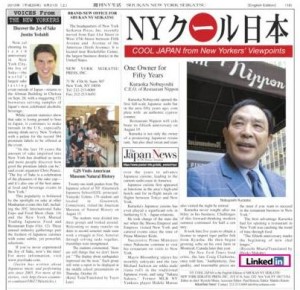Job: Study Abroad Program Advisor @ University of California-Irvine (Irvine, CA)
Posted by Jayme Tsutsuse (Kyoto-fu, 2013-Present). Click here to join the JETwit Jobs Google Group and receive job listings even sooner by email.
————————————————————————————————————
Position: Study Abroad Program Advisor
Posted by: University of California- Irvine
Hours: part-time, Monday-Wednesday, 7 hours per day
Location: Irvine, CA
Salary: Hourly $20.67
Start Date: mid-September 2013 to mid-May 2014
Application Deadline: 19 September 2013
Overview:
Under the direction of the Manager, University Programs in International Programs, the Study Abroad Program Advisor is primarily responsible for the advising and monitoring of participants in the undergraduate-level study abroad programs in University Programs which currently include California Academic Program (CAP), Academic Year Abroad Programs (AYAP), and Academic Study Abroad Program (ASAP). The Advisor also assists with inquiry response and admission of University Programs applicants, and all student pre-arrival and arrival arrangements. The Advisor assists in conducting placement testing of new students and recommends their placement in ESL, UCI, and UNEX courses. The Advisor develops and coordinates academic advising plans, advises and tutors assigned participants, and ensures the performance and well-being of participants. The Advisor designs and teaches special courses and workshops on, but not limited to, American & academic culture, and assists in the scheduling and logistics of all program events, courses, workshops, seminars, tutoring, and other program components, including interactions with instructors, UNEX staff, and other UCI and community contacts. The Advisor takes the lead in implementing components of the University Programs portfolio to meet the needs of university-bound and/or visiting international students, such as peer mentoring, tutoring, study groups, Conversation Partners, campus involvement/events, and research opportunities.
Additional Information:
For more information, please visit the job listing and website.
Job: Global Learning Advisor @ University of South Dakota (SD)
Posted by Jayme Tsutsuse (Kyoto-fu, 2013-Present). Click here to join the JETwit Jobs Google Group and receive job listings even sooner by email.
————————————————————————————————————
Position: Global Learning Advisor
Posted by: University of South Dakota
Type: full-time, 12 month contract
Location: Vermillion, SD
Application Deadline: position is open until filled; review of applications will begin October 10, 2013
Overview:
Under the auspices of the Center, the Global Learning Advisor provides services to students who apply for, participate in, and return from independent study away programs. This position will work closely with students, faculty, staff, and abroad partners to ensure excellent advising, planning, and program implementation. This is a full-time, 12 month position that is benefits eligible.
Minimum Qualifications:
Master’s degree (preferred in college student personnel/higher ed administration with emphasis in international education/study abroad) and some college student advising required.
Preferred Qualifications:
- Ability to act independently and take initiative to problem-solve while supporting large numbers of students with very individualized situations regarding study away.
- Experience in counseling or advising college students.
- Excellent written, verbal, personal communication, and organizational skills to work closely with staff, faculty, students, and international partners in a variety of settings.
- Knowledge of domestic and international travel regulations of various governmental entities, financial aid policies and registration policies as they affect study away.
- Ability to do basic math related to managing a budget and making budget projections.
- Ability to collect, organize, and analyze assessment and other data.
- Experience with marketing and outreach initiatives, including public speaking.
- Strong computer and database skills including proficiency in Microsoft Office required; experience with Studio Abroad software is preferred.
- Experience studying/working/living abroad is preferred. Full professional proficiency (written and oral) in a language other than English is preferred. Activity in professional organizations in the field of international education is also preferred.
- Knowledge of other experiential learning and high impact educational practices supported by the Center preferred.
Application Instructions:
For more information and to apply go to: https://yourfuture.sdbor.edu, and search posting number 0005766.
JQ Magazine – Book Review: ‘The Way of Taiko’

“Those who want to learn more about taiko, whether they are novices in Japanese drumming or have been playing for several years, will be amazed by the rich history and culture of the genre.” (Stone Bridge Press)
By Rashaad Jorden (Yamagata-ken, 2008-10) for JQ magazine. A former head of the JETAA Philadelphia Sub-Chapter, Rashaad currently studies responsible tourism management at Leeds Metropolitan University. For more on his life in the UK and enthusiasm for taiko drumming, visit his blog at www.gettingpounded.wordpress.com.
Many JETs—myself included—have been drawn to taiko because we love the sound emanating from the drums and want to partake in something traditionally Japanese. But what do we really know about taiko?
For those looking to expand their knowledge of Japanese drumming, Heidi Varian’s The Way of Taiko (now available in a new edition from Stone Bridge Press) is a great way to go. Varian, a member of the San Francisco Taiko Dojo, introduces readers to the history and contemporary culture of the music that is a symbol of Japan to many.
Varian calls taiko the “heartbeat of Japan,” and that’s appropriate because the drum was a method of gathering townspeople or letting them know about any impending danger, in addition to being used to celebrate festivals. Like seemingly everything that’s considered an integral part of Japan, taiko has an enormously long history clouded in mystery (it actually may not have originated in Japan), but Varian explores it.
She not only examines taiko’s beginning and its importance in ancient Japan, but how taiko appeared in traditional Japanese theatrical forms like noh and kabuki. She also writes about how taiko gained a foothold in the United States—the first documented taiko drum appeared in San Francisco in 1910—and its pioneers (such as Seiichi Tanaka and Kenny Endo) on this side of the Pacific. Varian also doesn’t also live in the past when talking about taiko, as she raises important issues about its future.
Job: Assistant for Economic Affairs (Boston)
Posted by blogger and podcaster Jon Dao (Toyama-ken, 2009-12). Click here to join the JETwit Jobs Google Group and receive job listings even sooner by email.
————————————————————————————————————
Position: Assistant for Economic Affairs
Posted by: NEJETAA
Location: Boston, MA
Type: Full-Time
Salary: Commensurate with academic and professional experiences
Overview:
The Consulate General of Japan in Boston is seeking a person for the position of the Assistant for Economic Affairs / Science & Technology Section. The position serves as a link between the consulate and local governments and businesses in New England. The ideal candidate will be someone flexible enough to work on multiple projects at the same time, have an understanding of the differences in Japanese and American business cultures, can communicate effectively in both English and Japanese, and have the ability to make connections with a wide variety of local businesses and organizations.
Requirements:
- Bachelor’s degree, with a preference for specializations in international relations, international business, Japanese/East Asian studies, or related disciplines
- Fluent in English
- Japanese language skills preferred
- Excellent written and verbal communication skills
- Computer skills such as Microsoft Word, Excel, etc.
- Experience living or working in Japan highly preferred
- Basic knowledge of the economic and political situations in both Japan and New England, especially in the Greater Boston area
- Candidate must be a U.S. citizen or a U.S. green card holder (consulate is unable to provide visa sponsorship)
Application Instructions:
Please email a cover letter and resume by October 1st, 2013 to:
j.currier at bz dot mofa dot go dot jp
Or
Mail your cover letter and resume to:
Attn: Economic Affairs Section, Consulate-General of Japan in Boston
Federal Reserve Plaza, 22nd Floor, Boston, MA 02210
No phone calls please
Postings from Idealist.org 9.27.13
Via Idealist.org. Posted by Geneva Marie (Niigata-ken 2008-09) Geneva is a contributor to both JETwit and JETAANY. Geneva is on a continuous (epic) search for Japanese-related jobs in the United States. Click here to join the JETwit Jobs Google Group and receive job listings even sooner by email.
Research Associate (PSA)
Posted by: United Nations University
Type: Full-time
Location: Tokyo, Japan
Salary: Contract -JPY450,000 per month
Application Deadline: October 15, 2013
Under the overall guidance of the Director of UNU-ISP, and under the direct supervision of the Academic Officer of the Institute, the Research Associate will assist in the implementation of the overall goals of the Institute, and assist in the operation of various programme activities.
http://www.idealist.org/view/job/W33S949WnhSP
Seasonal Enrollment Advisor
Posted by: Global Leadership Adventures
Type: Full-time, Part-time
Location: San Diego, CA
Salary: Contract
Application Deadline: Not Specified
Global Leadership Adventures is a fast growing international education company that sells and operates high quality short-term service-learning trips for high school students in developing countries.We believe our San Diego Headquarters offers an environment where we work hard and believe in our mission, but we’re also a team of fun, dynamic professionals who love to travel! We are looking for seasonal advisors to join our team of consultative sales experts during our peak season. We think it is the best seasonal gig in town with the possibility for growth in the future.
http://www.idealist.org/view/job/xhSJ3T6wKMD
【RocketNews24】How to survive an earthquake (or zombie outbreak): Expert advice and items to prepare
Posted by Michelle Lynn Dinh (Shimane-ken, Chibu-mura, 2010–13), editor and writer for RocketNews24. The following article was written by Philip Kendall (Fukushima-ken, Shirakawa-shi, 2006–11), senior editor and writer for RocketNews24, a Japan-based site dedicated to bringing fun and quirky news from Asia to English speaking audiences.

Anyone living in Japan for any length of time would be mad not to spend an hour throwing a bag together.
Being the most earthquake-prone country in the world, earthquake drills are as common in schools in Japan as fire drills are in the West. Knowledge of what to do and how to prepare for big quakes is essential, but many foreigners visiting or living in Japan are simply not used to larger tremors and have little or no idea how to respond should the earth start to rumble. Thankfully, even in Japan the chances of being hurt or killed in an earthquake are relatively slim, but it’s important to know what you can do to prepare. Combining our own first-hand experience with the expert advice of a seismologist from the California Institute of Technology, the following article not only discusses how best to respond in the event of an earthquake, but also lists the essential items that anyone living in Japan or any other earthquake-prone country should have stowed away in their earthquake preparedness kit.
Talking safety is never the most exciting subject, and no one’s asking you to go all Dwight Schrute and build a nuclear fallout shelter here, but it pays to be ready. And if the thought of tooling up in the name of earthquake preparedness fails to get your heart pumping, simply substitute the word “earthquake” for “zombie outbreak” and the process will become infinitely more fun.
JQ Magazine Seeks Writers for Fall 2013!
As we head into fall, JETAA New York’s JQ magazine continues to provide content with an ever-expanding array of articles, interviews and features (see our recent stories here). We’re now looking for new writers, including recent returnees and JET vets, from all JETAA chapters worldwide for posting stories via our host at the global JET alumni resource site JETwit.com. (Scribes are also encouraged to join the JET Alumni Writers group on LinkedIn.)
Below are story ideas grouped by JET participants and alumni (JET World) and those more on Japanese culture (Japan World). And if you’re a JET or JETWit contributor from anywhere in the world with a story idea of your own, let us know!
Click “Read More” below for our fall 2013 ideas pitch package, and contact JQ editor Justin Tedaldi (magazine [at] jetaany [dot] org) to sign up for stories.
Now, JQ is looking for additional help behind the scenes! Our editor (celebrating his fifth anniversary at the helm in November) is seeking a capable assistant to help with the posting, social media sharing and story assigning across all JETAA chapters. If you’re a wiz with WordPress, Facebook and Twitter, and enjoy all forms of Japanese arts, events and media, reach out to Justin. Thanks and yoroshiku!
Posted by blogger and podcaster Jon Dao (Toyama-ken, 2009-12). Click here to join the JETwit Jobs Google Group and receive job listings even sooner by email.
————————————————————————————————————
Position: English & Spanish Teachers
Location: Tokyo, Japan (starting point before global voyage)
Salary: Volunteer
Overview:
Teachers for the on-board programme are recruited by GET Universal Co. Ltd. There are between 8-18 positions available onboard each cruise, depending on student enrollment numbers. The language teaching positions are on a volunteer basis, so there is no salary. However the participation fee for the voyage, which covers meals and accommodation on-board, and port taxes are all covered by GET Universal Co. Ltd.
Requirements:
- Have at least 18 months of relevant full-time English language teaching experience.
- Be a highly advanced speaker of English, although not necessarily ‘native’ or ‘first-language’ speaker of English.
- Have experience of, or a definite interest in, the areas of peace and global education in language teaching.
- A qualification in English language teaching and conversational Japanese ability are also preferred, but are not prerequisites for the application.
- Applicants with multiple language teaching ability will be looked upon favourably. Read More
Report: Children Bitten by Lion, Parent’s Ecstatic
Posted by Benjamin Martin, a JET from 2008-2013 in Okinawa, publisher of the blog MoreThingsJapanese.com and author of the award-winning YA fantasy series Samurai Awakening (Tuttle).
 Yes. This past week on Kume Island, children were sent screaming as a single wild lion went rampaging through a peaceful neighborhood. Well, it was mostly peaceful. Since it was the full moon and August 15th of the Kyureki calendar, there were also a bunch of people around banging gongs and playing music. There were also some creepy Hacaburo running around egging the lion on. Warned in advance that something might be going on, I showed up with some local friends just after sunset with my camera ready. What I saw shocked me, and soon my former students were running for cover… behind me.
Yes. This past week on Kume Island, children were sent screaming as a single wild lion went rampaging through a peaceful neighborhood. Well, it was mostly peaceful. Since it was the full moon and August 15th of the Kyureki calendar, there were also a bunch of people around banging gongs and playing music. There were also some creepy Hacaburo running around egging the lion on. Warned in advance that something might be going on, I showed up with some local friends just after sunset with my camera ready. What I saw shocked me, and soon my former students were running for cover… behind me.
By the end of the night no less than 5 children had been bitten. When asked, parents responded that they were overjoyed. One parent, while holding a screaming infant, smiled widely and talked about how smart he would be while neglecting to stop the lion from continuing its rampage.
For more on this story, visit MoreThingsJapanese.com for pictures and video.
Job: News Desk Editor at The Japan Times (Tokyo)
Thanks to JET alum journalist Tom Baker for passing this one along. Posted by blogger and podcaster Jon Dao (Toyama-ken, 2009-12). Click here to join the JETwit Jobs Google Group and receive job listings even sooner by email.
————————————————————————————————————
Position: News Desk Editor
Posted by: The Japan Times
Location: Tokyo, Japan
Type: Full-Time
Overview:
The Japan Times is seeking an experienced editor, with strong news editing and layout skills to work full time on the news desk.
Requirements:
- Strong knowledge of current affairs, both global and domestic
- Intermediate computer skills
- Knowledge of AP style
- Proficiency in InDesign/InCopy and the Japanese language is a plus
Application Instructions:
Applicants should send a résumé and a letter explaining why they are interested in this position by Oct. 4 to hr @ japantimes.co.jp or via regular mail to the attention of HR and General Affairs Division, The Japan Times, Ltd., 4-5-4 Shibaura, Minato-ku, Tokyo 108-8071.
All documents are nonreturnable. Successful applicants will be contacted for an interview.
Percival Constantine at the Japan Writers Conference
Percival Constantine (Kagoshima 2008-2013) is a writer for GaijinPot and the Pulp Ark Award nominated author of several New Pulp novellas, including “The Myth Hunter” and “Love & Bullets.” He is also an editor at Pro Se Productions and resides in Kagoshima. At the Japan Writers Conference this year, he’s going to give a presentation titled “Self-Publishing: The Pros and Cons of Bypassing Traditional Publishing.” Here’s the official description.
 With the advent of new technology such as print-on-demand services and ebooks, the market has opened for authors who wish to go it alone and publish their books without the use of an agent or publisher. There are both positives and negatives to this approach.
With the advent of new technology such as print-on-demand services and ebooks, the market has opened for authors who wish to go it alone and publish their books without the use of an agent or publisher. There are both positives and negatives to this approach.
In the past, if one wished to publish a book, it required finding an agent and the agent locating a publisher for the product. Thanks to print-on-demand and ebook publishing, self-publishing has become easier than ever for aspiring authors. There are both positive and negative aspects to this. On the plus side, there is no need to write a number of query letters and send out submissions to agents or for the long wait before a book ends up on the market, as well as an increased share of the royalties. On the downside, the self-published author is responsible for all aspects of the production process, from editing the manuscript, laying out the book, creating a cover, and promotion. And though there is a larger share of royalties, the amount of copies sold can be far fewer. This presentation will examine the pros and cons of self-publishing.
To learn more about the Nov. 2-3 Japan Writers Conference, visit the official website HERE.
To learn more about Percival, visit his site HERE.
Job: Publisher’s Assistant at Stonebridge Press (SF Bay Area)
Thanks to JET alum journalist Tom Baker for passing this one along. Posted by blogger and podcaster Jon Dao (Toyama-ken, 2009-12). Click here to join the JETwit Jobs Google Group and receive job listings even sooner by email.
————————————————————————————————————
Position: Publisher’s Assistant
Posted by: Stone Bridge Press
Location: Albany, CA
Type: Part-Time
Overview:
Stone Bridge Press, Inc., a Berkeley/Albany-based publisher of books about Asia (mostly Japan and China), is looking for a part-time Administrative Assistant to the Publisher. Duties include performing administrative tasks that relate to editorial, publicity, sales, and marketing; managing/creating social media and website content; entering data in Excel and Quickbooks.
This position is part-time, up to 4 days per week. Flexible scheduling OK.
Requirements:
- proficiency in Excel
- excellent English-language oral and written communication skills
- familiarity with Facebook, Twitter, Pinterest, Goodreads Read More
Justin’s Japan: Nippon in New York — Martial Arts, Hayao Miyazaki and ‘Evangelion’ at Comic Con

The Wind Rises, the latest film from director Hayao Miyazaki, has its U.S. premiere at New York’s Alice Tully Hall Sept. 28. (Studio Ghibli)
By JQ magazine editor Justin Tedaldi (CIR Kobe-shi, 2001-02) for Examiner.com. Visit his Japanese culture page here for related stories.
Saturday, Sept. 28, 3:00 p.m.
All American Open International Karate Championships
Hunter College Sportsplex, 68th Street and Lexington Avenue
$30 general admission/$65 RES floor/$80 VIP ringside
Get your kicks at this annual event presented by Kyokushin Karate New York, the original and world renowned full-contact knockdown karate style founded in 1953 by Grandmaster Mas Oyama. The All American Open consistently brings the world’s best karate fighters to compete for the amateur athletic championship title. Scheduled fighters Include 2012 All American Open champion Zahari Damyanov, Women’s World Middleweight champion Julie Lamarre, and Men’s World Heavyweight champion Alejandro Navarro.
Sept. 28 & Oct. 4
Alice Tully Hall, 1941 Broadway
$13
U.S. premiere! As part of the 51st New York Film Festival, the great Japanese animator Hayao Miyazaki’s new (and reportedly final) Studio Ghibli film is based on the life of Jiro Horikoshi, the man who designed the Zero fighter operated by the Imperial Japanese Navy from 1940 to 1945. An elliptical historical narrative, The Wind Rises is also a visionary cinematic poem about the fragility of humanity, starring the voice of Neon Genesis Evangelion director Hideaki Anno! Presented in Japanese with English subtitles.
Sept. 29, 5:00 p.m.
Rainbow Bubble Girls Open Audition as Talent Contest
Maid Cafe NY, 150 Centre Street
Free
Girl group Rainbow Bubble, an international all-girl idol group based in New York, is now looking for new members who can sing in different languages and dance. This current contest (which precludes semi-finals and finals to come) offers a top prize valued at $500 and a chance to receive an exclusive artist contract! Click here for contest rules and email StarGenerationsINC@gmail.com to pre-register.
For the complete story, click here.
WIT Life #251: Honolulu’s Byodo-in
WIT Life is a periodic series written by professional Writer/Interpreter/Translator Stacy Smith (Kumamoto-ken CIR, 2000-03). She starts her day by watching Fujisankei’s newscast in Japanese, and here she shares some of the interesting tidbits and trends along with her own observations.
Every time I come to Honolulu I try to find a new place to explore that I haven’t tried before, and during this trip my discovery was the Byodo-in Temple in Kaheohe. This is the city where my local JET friend lives, who said it was a must see. For me this was a particularly special spot, as the temple is a replica of the original Byodo-in in Kyoto Prefecture’s Uji-shi, where I first lived in Japan as an exchange student. The Hawaiian version did not disappoint, as it is located at the foot of the 2,000 foot tall Koʻolau Mountains which provide breathtaking background scenery.
Honolulu’s Byodo-In was built in the 1960’s to commemorate the 100th anniversary of the arrival of the first Japanese immigrants to Hawaii, who came to work in the sugar plantation fields. In consultation with Hawaiian religious representatives, the developer of the park chose to Read More
Justin’s Japan: Discover the Joy of Sake
By JQ magazine editor Justin Tedaldi (CIR Kobe-shi, 2001-02) for Shukan NY Seikatsu. Visit his Examiner.com Japanese culture page here for related stories.
Now celebrating its 10th anniversary in New York City, The Joy of Sake—the world’s largest sake tasting event outside of Japan—returns to the Altman Building in Chelsea on Sept. 26, with a staggering 172 breweries serving samples of Japan’s most celebrated alcoholic beverage.
While current statistics show that sake is losing ground to beer in Japan, it continues to make inroads in the U.S., especially among drink-savvy New Yorkers with a palate for the record 384 premium labels to be offered at the event.
“In the last 10 years the amount of sake imported into New York has doubled as more and more people discover how good the premium labels can be,” says event organizer Chris Pearce. “The Joy of Sake is a celebration of the pleasures of the sake cup—and it’s also one of the best annual food and beverage events in New York.”
This popularity is bolstered by the spotlight on sake at other Manhattan events this fall, including the JFC International Sake Expo and Food Show (Sept. 14) and the New York Mutual Trading Japanese Food and Restaurant Expo (Oct. 12). These annual industry gatherings pair the freshest of Japanese cuisines with some subtle, yet powerful, selections.
If you’ve never experienced The Joy of Sake, now’s the time! For more information, visit www.joyofsake.com.



